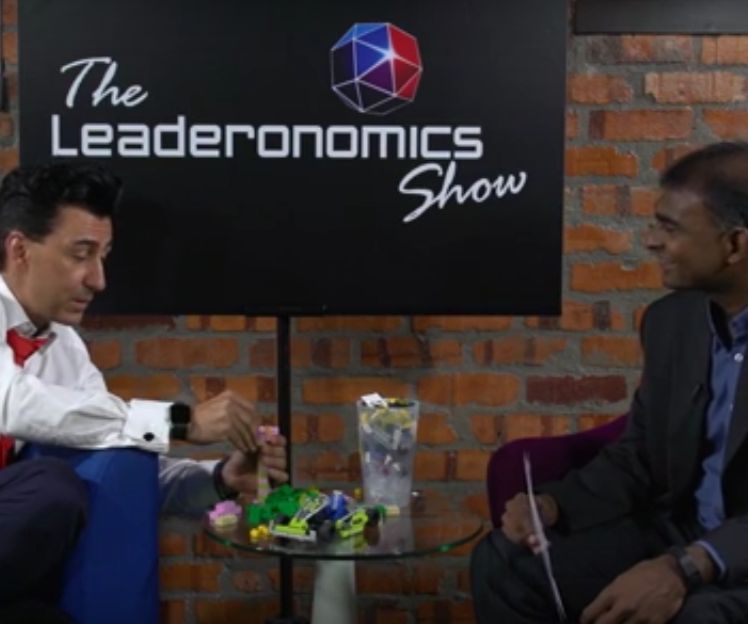Disruptor At Work

Just a few months back, I had the opportunity to speak at the Global Forum on Management and Entrepreneurship in Cebu, Philippines. The room was filled with more than 200 students who were studying “entrepreneurship” as a subject in their undergraduate studies.
The theme was Embracing Creativity and Innovation in conjunction with Global Entrepreneurship Week Philippines. There, I shared on the power of how ideas have changed the world and all it takes is for one to think of ways to do things differently. To quote Apple’s mantra, think different. How do we do that? Through creativity and innovation.
Creativity and innovation, what are these words and how do they relate to you as an individual or as someone who is starting young in the working world?
In the book The Innovator’s DNA, a six-year study was conducted by Harvard Business School professor Clayton M Christensen, Hal B Gregersen, professor of leadership at INSEAD and Jeff Dyer, professor at Brigham Young University, to find out what lies behind the creative and innovative mind.
They concluded the study by identifying five key skills after interviewing more than 3,000 executives and 500 people who are inventors or founders of innovative companies:
• Questioning allows innovators to challenge the status quo and consider new possibilities.
• Observing helps innovators detect small details — in the activities of customers, suppliers and other companies — that suggest new ways of doing things.
• Networking permits innovators to gain radically different perspectives from individuals with diverse backgrounds.
• Experimenting prompts innovators to relentlessly try out new experiences, take things apart and test new ideas.
• Associational thinking — drawing connections among questions, problems or ideas from unrelated fields — is triggered by questioning, observing, networking and experimenting and is the catalyst for creative ideas.
Many years ago, someone questioned, why not connect the phone with the Internet? The Smartphone came to being.
Back in 2004, a university student named Mark experimented on a website to see who was “hot or not” for Harvard students.
Facebook came to being, which led to 1,310,000,000 total number of monthly active Facebook users who spend an average of 18 minutes per visit, according to Facebook’s research on Jan 1, 2014.
Close to home, we have our very Tan Sri Tony Fernandes who decided that “now everyone can fly” and through innovative means, brought AirAsia, now being named the world’s best low-cost airline to greater heights.
I believe that you can apply these ideas anywhere you are and here are some examples of how this has been applied in my workplace:
Processes
Employee volunteering is a big part of the bank and every year, the management trainees of the bank are tasked lead an initiative to have an employee volunteering day where everyone will have the opportunity to volunteer. Imagine trying to coordinate a nationwide volunteering effort covering all bank branches across Malaysia?
After questioning and observing the processes, the organising committee disrupted the current process where “everyone did their own thing” and decided to develop an initiative where all branches would visit a home on that day.
A process was given for everything, where everyone had standardised briefing packs, programme schedules, the opportunity and training to conduct Financial Education Programmes and budgeting; which fits the local needs. This led to a smooth and clear way off organising things.
As a result, more than 30 homes were reached across four regions in Malaysia impacting 1,200 people where more than 600 volunteers were engaged. Furthermore, the team will be making it a quarterly visit where orphanages, homes for special needs and old folks will be able to establish a relationship with the bank’s employees.
The collective effort was marked as something significant in the bank and the team was duly recognised for their innovative efforts.
Partnerships
Partnering also means practising associational thinking to innovate. One of my rotations as a management trainee was in Priority Banking and I had the task to think of an activity to appreciate the high net worth clients who have been banking with us.
I observed that near the bank was a spa and wellness centre that was looking for clients whom I serve at the bank. After a few discussions and lots of green tea, we came up with a win-win situation where the bank could appreciate our longstanding clientele through a pampering session.
The centre would serve our clients and later on offer an opportunity to take up a package with them. Clients were happy with the “day of indulgence” where the centre dedicated the day just for our Priority Banking clients.
This idea we experimented with ended so well that the centre has offered this “day of indulgence” to be a monthly occasion!
This is a simple and creative idea that didn’t take much effort yet resulted in a ‘win’ for everyone. Here are some ways to develop the innovator in you:
1. Schedule time to think
We live in a world where there is always something to do, “doing this” and “doing that” that we end up forgetting that we are human beings and not human doings. Take time to just sit back and reflect on some of your thoughts. Best times are when you commute to work, just before you sleep or early in the morning after a good night’s rest. My personal favourite is shower time, when no one can disturb you!
2. Schedule time to talk
Talk, meaning meet people and share ideas with them, especially with people from different backgrounds. Communicate and collaborate often and try to think of solutions to problems at work. Even the simplest of problem needs a solution!
3. Schedule time to… Exercise!
Did this surprise you? Well it shouldn’t! A recent study by Journal Frontiers in Human Neuroscience, says people who exercise regularly score better at creativity tests, a healthy and also inexpensive way to boost your creativity. You will be amazed at how 20 minutes of exercise daily can improve your creativity.
In conclusion, there are plenty of opportunities to innovate and “disrupt” your business-as-usual work. If you want to innovate, here are a few simple steps to get started:
Step 1: Identify your target. Find out how and what can you innovate on.
Step 2: Think about addressing the situation with the five skills from the Innovator’s DNA – questioning, observing, networking, experimenting and associational thinking.
Step 3: Take action. Apply the skills and set a goal to address the situation.
Step 4: Don’t give up! Continue innovating and let this be a perpetual process to make the world a better place!
Jason Lee is part of Standard Chartered Bank’s International Graduate Programme in Kuala Lumpur. He believes that innovation and creativity is not only present and important in start ups and business but in banks and big organisations too. If you would like to engage with Lee, you can connect with him at @jasonleecj on Twitter. Click here to read more articles.
Leadership
This article is published by the editors of Leaderonomics.com with the consent of the guest author.





